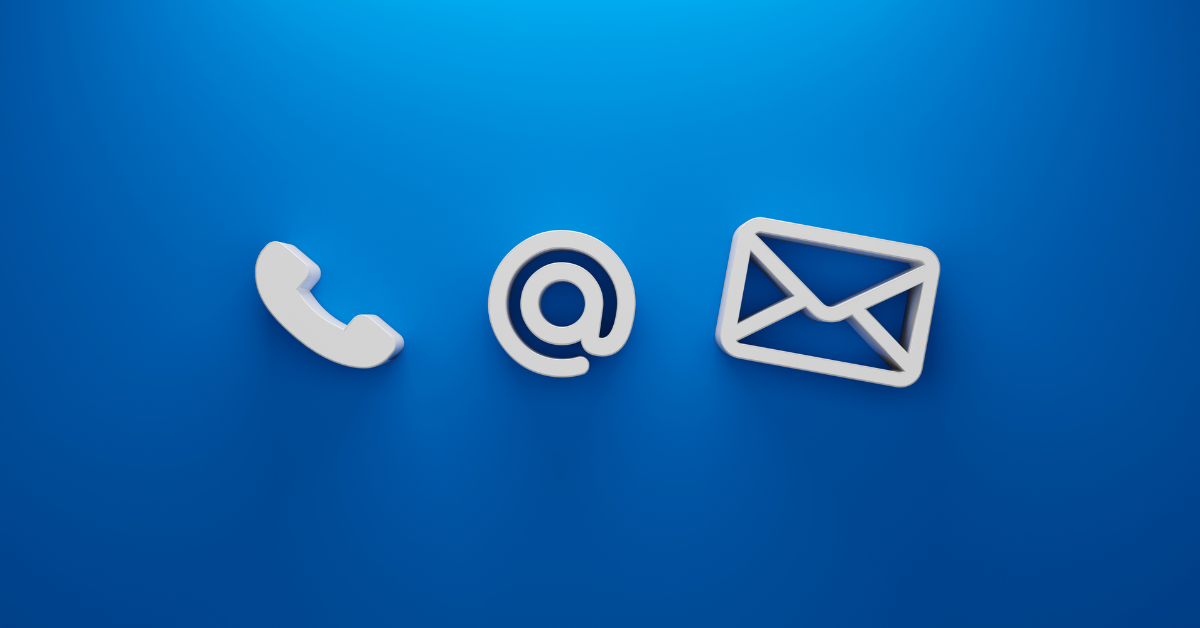What Is Email Marketing?
Email marketing has been a powerful tool for businesses for years, and it continues to evolve and grow in 2024. Email marketing has become even more personalized, targeted, and effective with advancement of technology and consumers more demanding. In this article, we’ll explore the latest trends, strategies, and technologies in email marketing, and how they can help businesses connect with their audiences and achieve their marketing goals.
Why email marketing is the way to go?
Email marketing might not be the only way to go, but it certainly remains a powerful and versatile tool in your digital marketing arsenal. Here’s why it deserves a place in your strategy:
1. Direct Engagement: Email offers a direct line of communication with your audience, bypassing crowded social media feeds and spam filters. It lands straight in their inbox, where they’re likely to see it.
2. Measurable Results: Unlike some marketing channels, email provides clear metrics. You can track open rates, click-through rates, conversion rates, and more, allowing you to refine your campaigns and measure their effectiveness.
3. Cost-Effective: Compared to other marketing channels, email marketing offers high ROI. Building an email list and sending campaigns is relatively inexpensive, making it accessible to businesses of all sizes.
4. Personalization Potential: You can segment your audience and personalize your emails based on their interests, demographics, and past behavior. This increases engagement and conversion rates.
5. Scalability: You can reach a large audience with a single email blast, and automation tools allow you to personalize and send emails without spending hours on each one.
6. Relationship Building: Email allows you to nurture relationships with your audience by providing valuable content, sharing company updates, and offering exclusive deals. This fosters trust and loyalty.
7. Versatility: Email can be used for various marketing goals, from generating leads and promoting products to building brand awareness and driving website traffic.
8. Integration with other channels: Email integrates seamlessly with other marketing channels like social media and paid advertising, creating a powerful multi-channel approach.
Overall, email marketing remains a powerful tool for reaching your target audience, building relationships, and driving business growth. By leveraging its strengths and addressing potential challenges, you can unlock its full potential and achieve your marketing goals.
Disadvantages of email marketing
While email marketing boasts numerous advantages, it’s crucial to be aware of its potential drawbacks before diving in. Here are some key disadvantages to consider:
- Spam Filters: Your emails might get trapped in spam filters, never reaching their intended recipients. Navigating spam filters requires careful attention to best practices and building sender reputation.
- Competition in Inboxes: Faced with overflowing inboxes, your emails compete for attention against personal messages, social media notifications, and promotional messages from other businesses. Standing out amidst this noise can be challenging.
- Unsubscribes and Churn: Not everyone enjoys marketing emails. Some subscribers may unsubscribe, impacting your list size and engagement rates. Maintaining a healthy balance between value and promotion is crucial.
- Design and Content Creation: Crafting compelling emails that engage your audience requires design skills, writing talent, and a good understanding of marketing principles. Hiring professionals or investing in tools can add to your costs.
- Compliance and Legal Considerations: Adhering to anti-spam regulations and data privacy laws requires knowledge and effort. Ignoring these can lead to penalties and damage your reputation.
- Time Management and Ongoing Optimization: Sending and managing email campaigns takes time and effort. Monitoring performance, analyzing data, and optimizing your strategy is a continuous process.
Email marketing essential elements
While there are several contributing factors to a successful email marketing campaign, there are three crucial elements worth highlighting:
1. A targeted audience: This forms the foundation of everything else. You need to know who you’re trying to reach and understand their needs, interests, and pain points. Sending generic emails to a broad audience rarely yields high engagement or returns. Segmentation and personalization, based on demographics, behavior, or preferences, are key to targeting the right people with the right message.
2. Compelling content: Once you have the right audience, you need to capture their attention with valuable content. This could be informative articles, exclusive offers, product updates, industry insights, or even entertaining stories. Remember, people don’t want to be bombarded with sales pitches. Focus on providing value and building trust before asking for anything in return.
3. Clear call to action (CTA): Don’t leave your audience wondering what to do next. Every email should have a specific and actionable CTA that tells them what you want them to do, whether it’s visiting a website, signing up for a demo, or making a purchase. Make your CTAs clear, concise, and visually appealing to encourage interaction.
Email marketing types and examples
Email marketing comes in many flavors, each with its own purpose and strengths. Here are some common types you might encounter:
Transactional Emails
Transactional emails are triggered automatically based on a user’s interaction with your platform or service. They typically contain essential information and updates directly related to that interaction
- Order confirmations: Inform customers about their purchase details, shipping information, and expected delivery date.
- Welcome emails: Greet new subscribers and introduce them to your brand, products, or services.
- Password resets: Provide a secure way for users to reset their passwords.
- Account updates: Notify users about changes to their account information or preferences.
Promotional Emails
Promotional emails are the workhorses of many email marketing strategies. They aim to directly drive sales, encourage website visits, or promote specific actions by showcasing your offerings and enticing your audience. While transactional emails focus on information delivery, promotional emails are all about driving engagement and conversions.
- Newsletters: Share company updates, industry news, valuable content, and exclusive offers.
- Product announcements: Introduce new products or features to your audience.
- Promotional offers: Promote sales, discounts, coupons, and limited-time deals.
- Abandoned cart emails: Encourage customers to complete their purchases by reminding them about items left in their shopping cart.
Relationship-Building Emails
These emails shift the focus from immediate conversions to fostering personal connections with your audience. They provide value, showcase your brand personality, and humanize your communication, ultimately building emotional ties with your subscribers.
- Birthday emails: Send personalized birthday greetings and exclusive offers.
- Milestone emails: Congratulate users on special occasions like anniversaries or completing a program.
- Survey emails: Gather feedback from subscribers to understand their needs and preferences.
- Re-engagement emails: Reach out to inactive subscribers and try to win them back.
Content-Driven Emails
While promotional emails aim for immediate conversions, content-driven emails take a different approach. They prioritize engaging your audience with valuable content, building trust, and establishing your brand as an expert in your field. Think of them as an opportunity to educate, entertain, and nurture genuine connections with your subscribers, ultimately paving the way for future conversions.
- Blog digests: Share summaries of your latest blog posts and encourage readers to visit your website.
- Ebooks and white papers: Offer valuable resources in exchange for contact information.
- Industry insights and reports: Share your expertise and establish yourself as a thought leader.
- Curated content: Offer relevant articles, videos, or infographics from across the web.
Choosing the Right Type
The best email type depends on your goals, target audience, and overall marketing strategy. Consider what you want to achieve with your email and who you’re trying to reach to select the most effective format.
8 Essential Keys to Unlock Email Marketing Success
- Build Permission-Based Lists: Forget buying lists or scraping the web. Focus on gathering email addresses organically through website forms, lead magnets, and opt-in incentives. Prioritize building trust and respect by adhering to anti-spam regulations and offering clear unsubscribe options.
- Craft Compelling Subject Lines: The subject line is your first impression. Make it catchy, informative, and relevant to pique curiosity and encourage opens. Experiment with different approaches and track performance to optimize your click-through rates.
- Segment Your Audience for Relevance: Not all subscribers are created equal. Group them based on demographics, interests, or purchase history to deliver targeted content and personalized offers that resonate with each segment.
- Prioritize Mobile Optimization: Most people check email on their phones. Ensure your emails display correctly across various devices and screen sizes. Use clear fonts, concise content, and responsive design for a seamless mobile experience.
- Deliver Value, Not Just Sales Pitches: Focus on providing helpful content, insightful tips, and valuable resources that solve your audience’s problems. Don’t bombard them with constant promotional messages. Build trust and nurture relationships before asking for sales.
- Embrace the Power of Storytelling: Connect with your audience on an emotional level through compelling stories, case studies, or customer testimonials. Storytelling helps you build relationships, showcase your expertise, and make your brand more memorable.
- Track, Analyze, and Adapt: Data is your friend! Analyze key metrics like open rates, click-through rates, and conversion rates to understand what’s working and what needs improvement. Test different headlines, content formats, and call-to-actions to continuously optimize your campaigns.
- Respect the Unsubscribe: People change their minds. Make it easy for subscribers to unsubscribe if they no longer wish to receive your emails. Remember, maintaining a healthy and engaged list is more valuable than a bloated one.
Bonus Tip: Consistency is key! Develop a regular email sending schedule and stick to it. This helps keep your brand top-of-mind and fosters engagement with your audience.
Start sending your emails with confidence!
Before you hit send, here are a few final reminders to ensure your emails land in the right inboxes and resonate with your audience:
Double-check compliance: Familiarize yourself with anti-spam regulations and ensure your emails adhere to them to avoid ending up in junk folders.
Warm up your email address: If you’re new to sending bulk emails, gradually increase your sending volume to avoid triggering spam filters.
Subject line magic: Invest time in crafting captivating subject lines that entice opens. Experiment with different formats and track performance to see what works best.
Clean your subscriber list: Regularly remove inactive subscribers to maintain a healthy and engaged list.
Personalization matters: Make your emails feel personal by addressing recipients by name, segmenting your audience, and tailoring content to their interests.
Test and optimize: Don’t be afraid to A/B test different elements of your emails to see what gets the most engagement and conversions.
Start small and scale: Begin with manageable campaigns and gradually scale your efforts as you gain experience and confidence.
Respect the unsubscribe: It’s okay if people unsubscribe. Make it easy for them to do so, and focus on building a list of highly engaged subscribers.
Remember, success doesn’t happen overnight. Be patient, keep learning, and track your results to continuously improve your email marketing strategy. With dedication and these tips in mind, you can turn email marketing into a powerful tool for your business growth.
Email Marketing Tools
Some of the best email marketing tools available in the market are:
- Mailchimp: A popular and user-friendly tool that offers a wide range of features, including email automation, landing pages, and audience segmentation.
- Constant Contact: A tool that offers easy-to-use templates, list segmentation, and social media integration.
- Campaign Monitor: A tool that offers advanced analytics and personalization features to help you create targeted email campaigns.
- Aweber: A tool that is affordable and easy to use, with features such as automation, segmentation, and analytics.
- GetResponse: A tool that offers advanced automation and segmentation features, as well as landing pages and webinars.
- ActiveCampaign: A tool that offers powerful automation and personalization features, along with CRM integration.
- HubSpot: A tool that offers a suite of marketing, sales, and customer service tools, including an email marketing platform with advanced segmentation and automation features.
It’s important to consider your specific business needs and budget when choosing an email marketing tool.
Related Content
13 Best Lead Generation Software For Your Business in 2024(Reviewed)
21 Best Email Marketing Tools To Save You Money in 2024-Free & Paid




